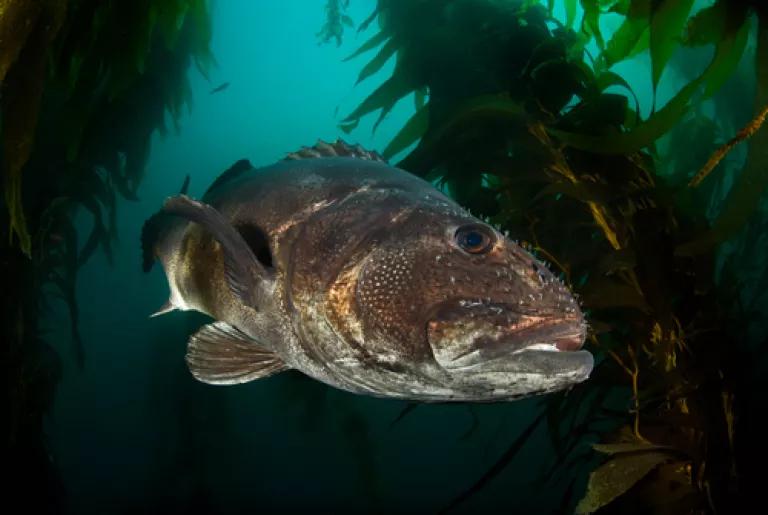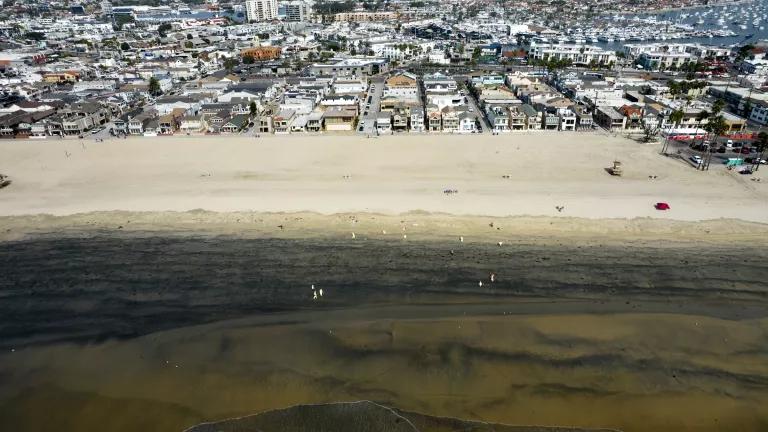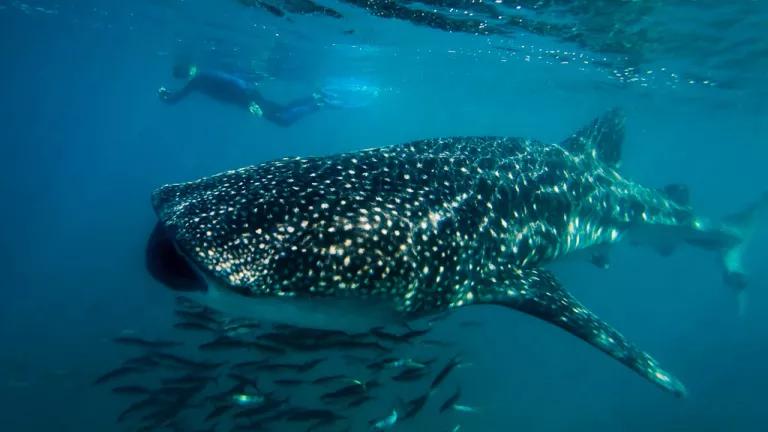Is the State Water Board serious about protecting California coastal waters? Next week's vote will test their resolve, again.

Gerick Bergsma 2009/Marine Photobank.
The story is getting all too familiar: Once again, the California State Water Board is considering amendments to its sensible policy to phase out once-through cooling – an outdated and destructive technology that sucks billions of gallons of sea water into coastal power plants to cool turbines.
The water is heated significantly and then is spewed back out into the ocean, bays, and estuaries. This process kills larger fish, sea turtles, and marine mammals as they get trapped screens, and kills small fish and other marine life as they get sucked in and cycled through the plant. It also hurts the marine ecosystem by discharging hot water back into the ocean, bays, and estuaries.

2007 (c) Octavio Aburto/Marine Photobank
Phasing out once-through cooling will likely mean either shutting down (mostly old and inefficient) fossil fuel plants that use the technology, or retooling their cooling systems to use currently available technology (closed cycle wet cooling) that uses less than a tenth the amount of water and therefore has a less harmful impact to the ocean’s ecosystem. Dry cooling systems, already required for new power plants in California, would use no ocean water.
Let’s take a look at this quick timeline of the battle-worn policy:
- 1972: The Federal Clean Water Act is passed, requiring that water used for cooling power plants use the best technology available to minimize adverse impact on marine life.
- 2005: The Water Board starts deliberations in earnest on the once-through cooling policy.
- 2006: The first draft policy is released. Adoption of the policy is put on hold until state-funded technical feasibility and electrical grid reliability reports can be completed.
- 2008: An amended draft policy is released.
- 2009: Another amended draft policy is circulated. With the support of California state energy agencies, this moderate, compromise policy includes a timeline to phase out the destructive practice at the state’s 17 coastal fossil fuel plants over 10 years and creates an inter-agency group to advice the Water Board on any necessary changes to the policy to ensure the state will keep the lights on. The plan addresses the two nuclear plants separately, and gives them somewhat more time to comply.
- 2009-2010: The policy was almost destroyed before it was completed -- substantial amendments proposed in the months before the plan was finalized would have seriously undermined its implementation. But when the votes came in last May, the board did the right thing, and adopts a more complete version of the policy, with fewer loopholes.
- Late Summer 2010: After the policy is voted on, but before it was finalized, it had to survive an–end-of-session legislative attack that would have gutted it.
- Fall 2010: After five years of back and forth, the policy was finalized – 40 years after the passage of the Clean Water Act required it.
- Fall 2010: Only days after the policy finally became law, the Water Board staff proposed another set of amendments to gut the policy.
- December 2010: The Water Board again kept their cool and voted down the amendments, choosing instead to let the policy work.
- April 1, 2011: Owners of power plants using once-through-cooling submitted their implementation plans. The plans vary widely in completeness and reason. The Los Angeles Department of Water and Power’s (LADWP) plan requests a delay until 2035 to fully implement the policy, without substantially analyzing any faster implementation timeline or scenario.
- May 2011: Without any public analysis of reliability concerns, the Water Board staff released draft amendments to the Policy that provide LADWP’s requested delays, with almost no new analysis of impacts of the substantial- and opening the door for other power plant owners to ask for further delay.
- July 5, 2011: the interagency group put in place by the Water Board to analyze grid reliability concerns votes on a motion recommending the Water Board take no action until it collects more information from LADWP, noting there is not sufficient information to justify extending the deadlines for compliance.
And now we are at another critical turning point: once again the Water Board is considering amendments to the policy that once again threaten the core of the Policy.
On Tuesday, July 19th, the Water Board will decide whether it will meaningfully implement its policy or cow to political pressure and allow multi-decade delays before the Policy has a chance to work. The test is another crucial one: if the policy works as it is intended to, the Board will have to tow a hard line for at least ten years, showing that it can tell the difference between empty political pressure and serious concerns about the reliability of the electric grid- concerns that may require some reconsideration of the existing timeline.
You can help!
- Attend the State Water Board meeting on Tuesday, July 19th to show your opposition to deadline extensions, and your support for protecting the ocean.
- Contact the Los Angeles City Council members and ask them to oppose the deadline extensions for LADWP’s power plants.



